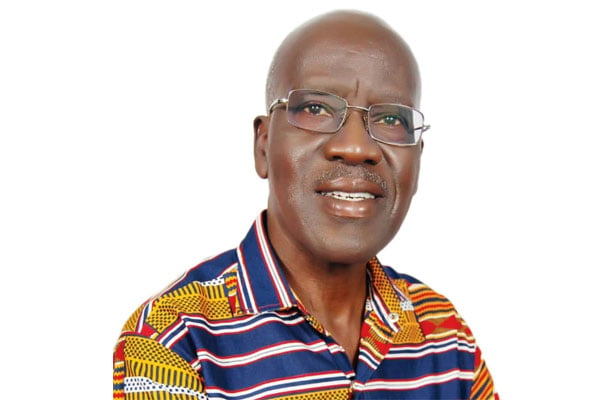Prime
When my thigh was a book

Prof Timothy Wangusa
What you need to know:
- To be able to write on your thigh meant that you came to school with ashen limbs.
Ah, that is exactly what my naked infant thigh was up to once upon a time – a notebook, an exercise book, or both. That was, of course, a generation – no, two, three, four generations – ago: when Mount Masaaba’s Namisindwa Ridge was still covered in a thick, thick forest, and the roaring perennial River Ririima had not yet dreamt of dwindling to a seasonal trickle – or a flash deluge inside the driest month!
That was indeed when my naked thigh happily functioned as a book.
It was in the sub-grade or pre-primary school located in our village of Nambaale that directly overlooks Namisindwa Ridge.
Ah yes, Namisindwa – the breathtaking geographical marvel at the world’s end, which was the ever-present back-drape of the unpredictable poly-coloured rainbow and the occasional soft and filtered golden light of the setting sun that is home to the spirit beings of the living dead.
But the ‘classroom’ for us in the first year of sub-grade learning was not a room. It was open space under an immense tree with a broad top that provided welcome shade when the sun was shining bright. And when it rained – aya-ya-ya-ya, we ran and squeezed ourselves, half a stone throw away, alongside those in the second year in their one and only other ‘classroom’, an actual room of mud-and-wattle walls and a grass-thatched roof.
The immense tree and the one thatched room were for real a school for the first five days of the week; they were ‘closed’ on the sixth day; and on the seventh they became something else. So for five days we learners were taught how to read and write; and we also sang many songs and clapped and danced to them. In the evening of the sixth day the older boys went back to the school to beat the drums calling people to come the following day – and by the time they arrived in the morning, the school had in the course of the night changed itself into a church!
But fantastic was the fun we had in acquiring literacy by especially learning to write, and additionally by learning to read. For one thing, there were no exercise books, no paper to write on, and no pens or pencils to write with. For another, the slates – about the size of modern-day tablet computers – that were used for writing on with some kind of hardened clay chalk were not enough to go round. So on any given school day some of us would write on the slates, while the rest of us wrote on our thighs with pieces of dried grass stalks.
To be able to write on your thigh meant that you came to school with ashen limbs, which was almost automatic for the majority of us, coming, as we did, from homes where skin lotions had not yet made their appearance. So we wrote our letters of the alphabet and simple words and numbers on our thighs, where they remained until we erased them with saliva or until we returned home and washed our bodies. Or, on particular days, we slept without first washing ourselves; so the writing on our thighs disappeared in our sweat while we slept at night.
Fast-forward to half a life-time later, to 1985, to an evening at the staff club of Makerere University, and a colleague – his name was Alphonse, a senior science laboratory technician originally from Rwanda – is passionately reminiscing for me and another colleague, Joan Kakwenzire of the History Department, his childhood days when his thigh was a book! And at once the child in me completely identifies with the child in Alphonse; his story is my story.
Ah yes, that time when my thigh was a book – when my brain was forced to memorise the writing on my thigh before it got erased when I washed myself or when I sweated at night!
Prof Timothy Wangusa is a poet and novelist.


